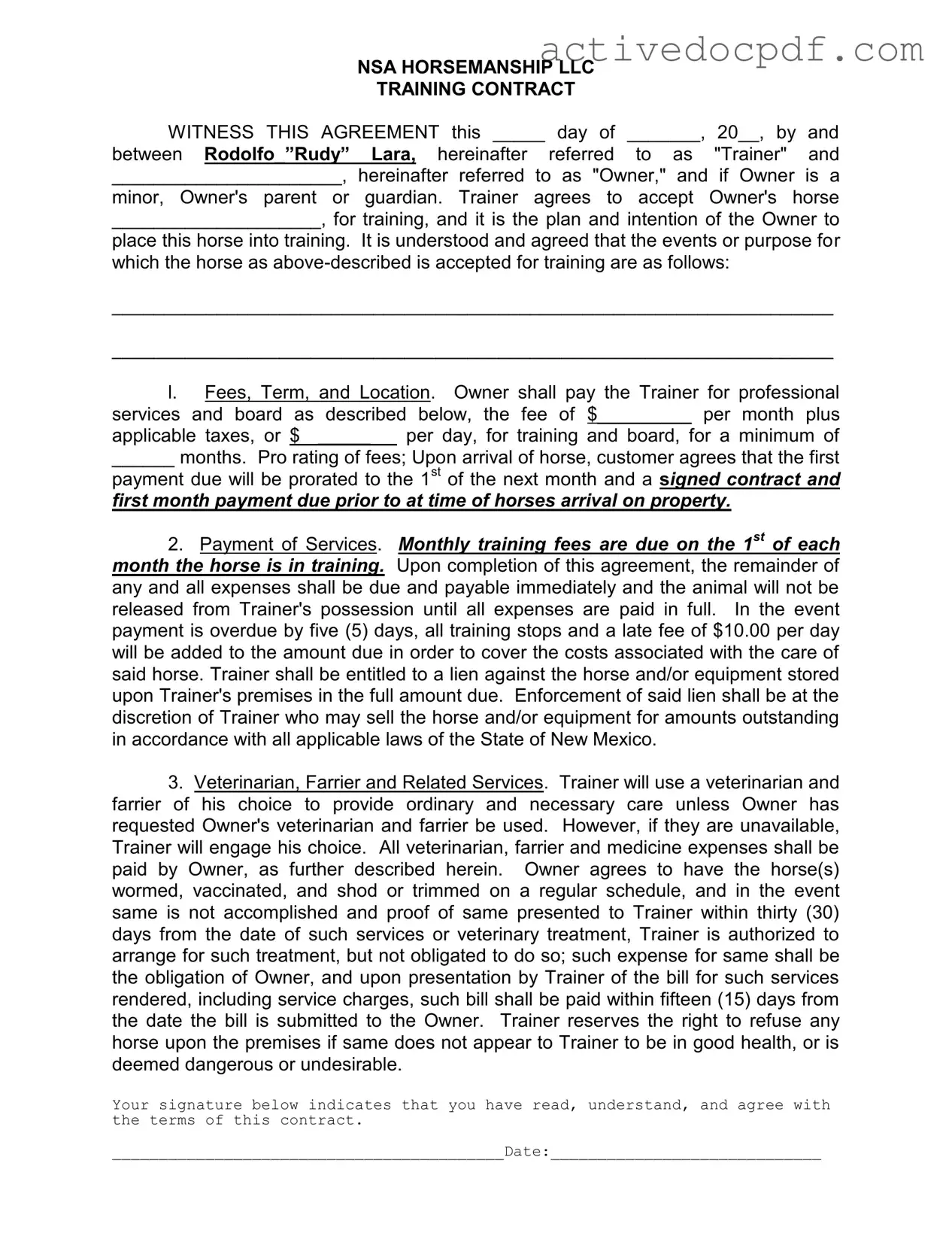Free Horse Training Contract PDF Form
The Horse Training Contract is a formal agreement between a horse trainer and the owner of a horse, outlining the terms and conditions for training services. This document serves to protect both parties by clearly defining responsibilities, fees, and expectations throughout the training process. Understanding this contract is essential for horse owners to ensure their horse receives the best care and training possible.
Edit Form Online
